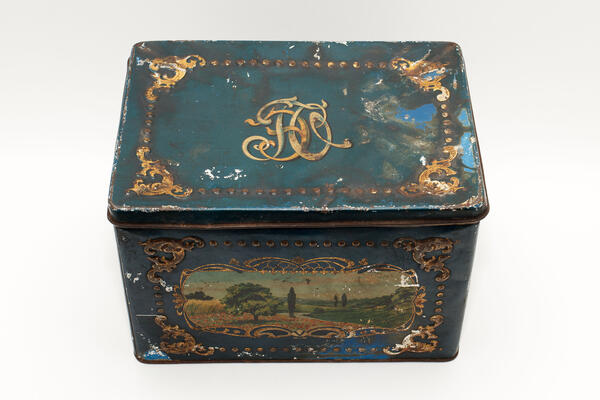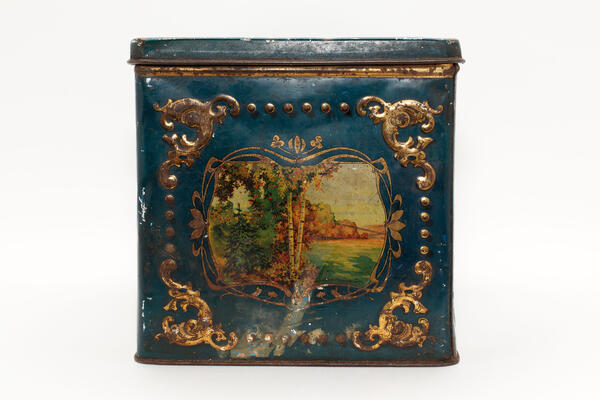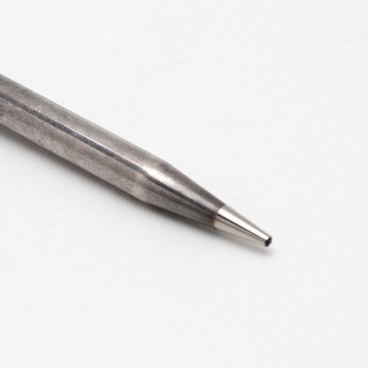This is a large tin tea box with the emblem of the Guards Economic Society. It was made at the metal factory of Grigory Abramovich Khaimovich located on Vasilyevsky Island in St. Petersburg. The full name of the company was “Steam Factory for the Manufacture of Tin and Copper Products, Sheet Lead for Tea, Soap and Commercial Packaging, Tea Seals, Tin Foil and Tinplate”.
The owner of the factory, Grigory Khaimovich was a hereditary honorary citizen of St. Petersburg. He was awarded silver medals at exhibitions in Moscow and Riga, two bronze medals in St. Petersburg, as well as one silver in Nizhny Novgorod — “For the sizable production and variety of products made of tin, zinc and galvanized iron”.
After 1912, the factory was called “Joint-Stock Company for the Manufacture of Tin Products, formerly owned by G.A. Khaimovich”. It produced a variety of tinplate products, such as tin foil and cans for candy, salt, and sugar. The products of the Khaimovich factory were distinguished by their quality and aesthetic design.
In the late 17th century, Russia got its first taste of tea. In the shopping stalls on Red Square, it was sold along with bread, salt and butter. Batches grew rapidly in size, and prices for tea plummeted, and some time later, almost all segments of the population could afford it. In 1814, tea accounted for two-thirds of all imported goods. In the following decades, up to three tons of tea were supplied to Russia from China annually.
At the turn of the 19th century, Russian tea lovers already distinguished several varieties. “Baikh” (a term used only in Russia) tea was popular — tea made from young fluffy leaves with an admixture of white tea. Its name originated from the Chinese word “baihe”, meaning “lily” and later came to mean any loose tea. There was also flower tea — with an admixture of white tea; compressed tea — pressed from ground black tea; “brick” tea — from long summer shoots with the addition of salt, oil, flour and spices.
Initially, tea was stored and transported in wooden crates, which were specially treated from the inside and outside to keep out light and moisture. Dried leaves were also transported by land and sea in large cloth bags. The industrial packaging of tea has undergone many changes. When selling tea by weight, it was packed in bags made of leather, paper, or durable fabric, so as not to lose a single gram of the precious product. Tin boxes quickly became popular due to their light weight and durability. Nowadays a standard package for tea is made of cardboard.





